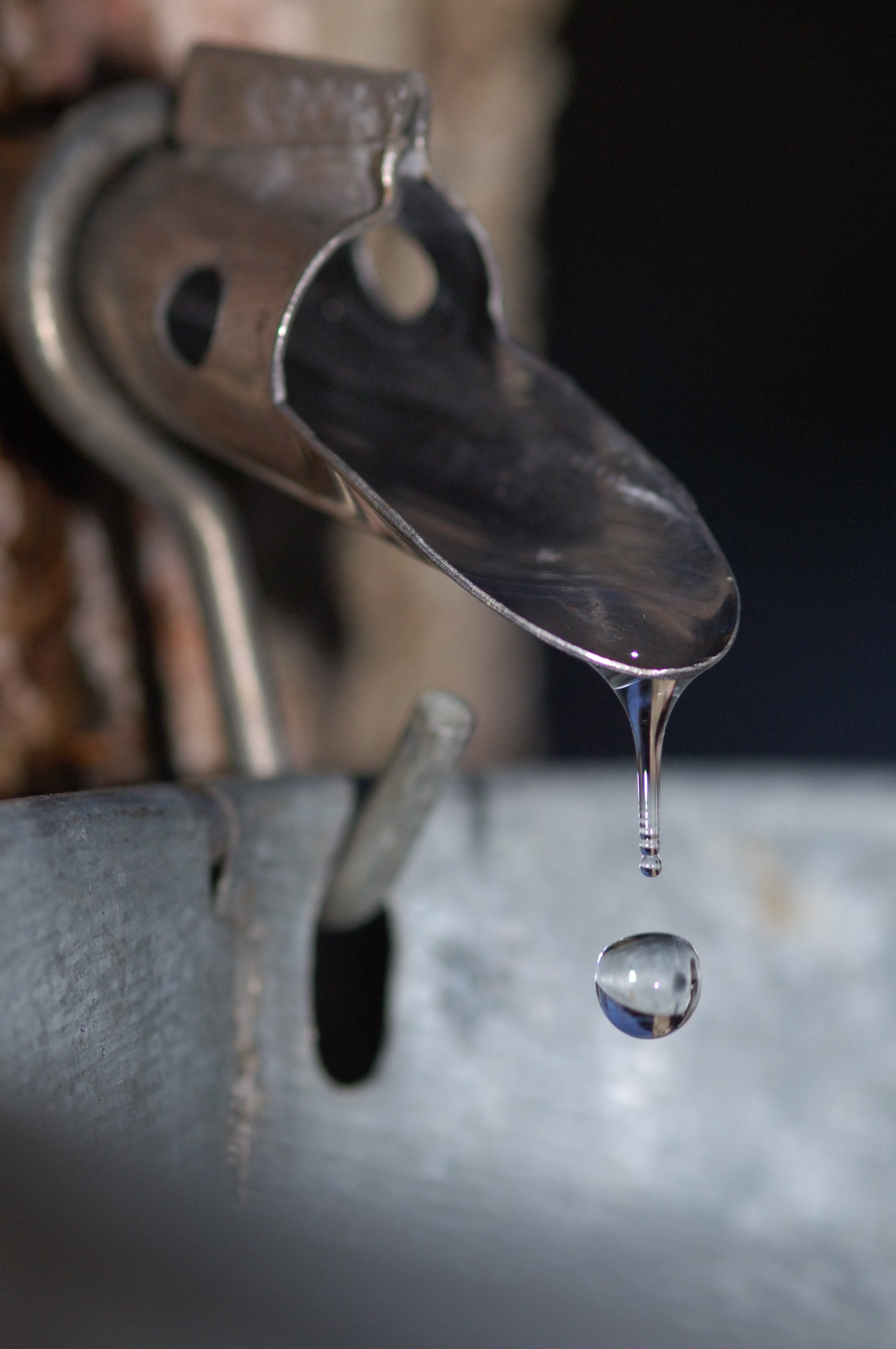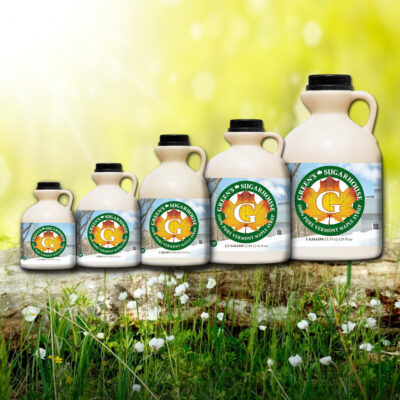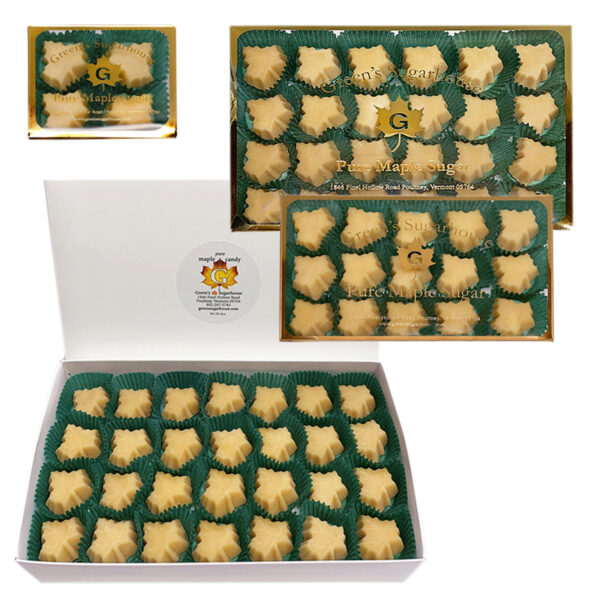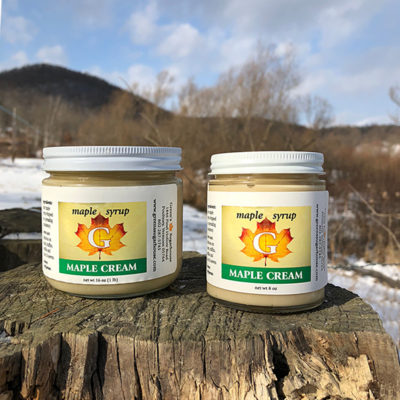THE STORY OF MAPLE
What Makes the Sugar Maple Tree so Sweet?
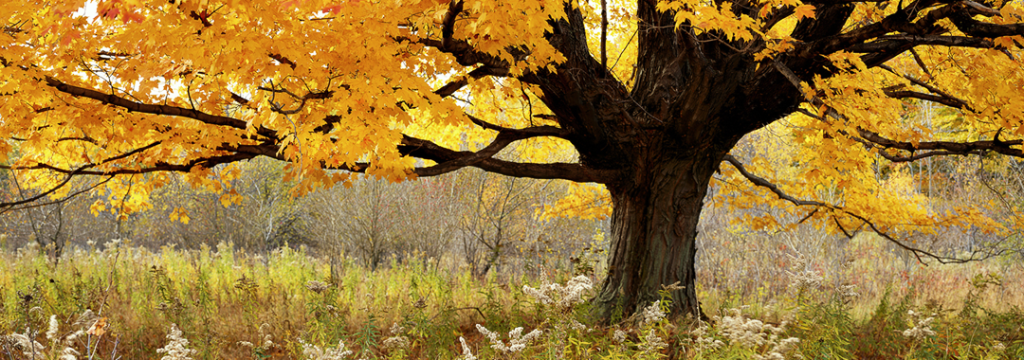 In Summer…
In Summer…
Bright green leaves on sugar maple trees combine sunlight, carbon dioxide from the air, water and soil nutrients through photosynthesis to produce food energy for tree growth.
Fall Frosts…
Bring on spectacular leaf color displays causing food energy to be converted into starch.
In Winter…
Trees store the starch in root tissues waiting for the warm sunlight of Spring to touch their branches. The starch is then converted into sugar, an energy boost for young leaves to be produced. This sugar mixes with moisture from the ground within the trees to form sap.
Prior to European Settlement in North America
While modern research and science have taught us so much about producing maple syrup and why exactly it’s healthier than any other all natural sweetener, it is still unknown who deserves the credit for making the first batch of maple syrup. The following legend however, is the most commonly told.
Prior to the European settlement of North America Chief Woksis of the Iroquois tribe was said to have thrown his tomahawk into the trunk of a maple tree. The next morning he pulled his tomahawk out of the tree and went off hunting for the day. The tree began to thaw on that warm spring day and the wound left in the tree by the tomahawk began to drip sap filling a container left at the base of the tree. When the chief returned from hunting his wife began to prepare their dinner. Thinking the container of tree sap was water, she used it to cook their dinner. After cooking the food for a period of time, they came to find it was delicious, like no meal they’d had before. In attempts to recreate that delicious sweet taste, the tradition of making maple syrup began.
It is believed during these times tomahawks were used to carve downward pointing arrows into the trunk of maple trees. This allowed the sap coming out of the trunk to flow down and be collected into birch bark buckets. The boiling down of the sap is believed to have been done by filling carved out logs with sap and putting in rocks heated by fire.
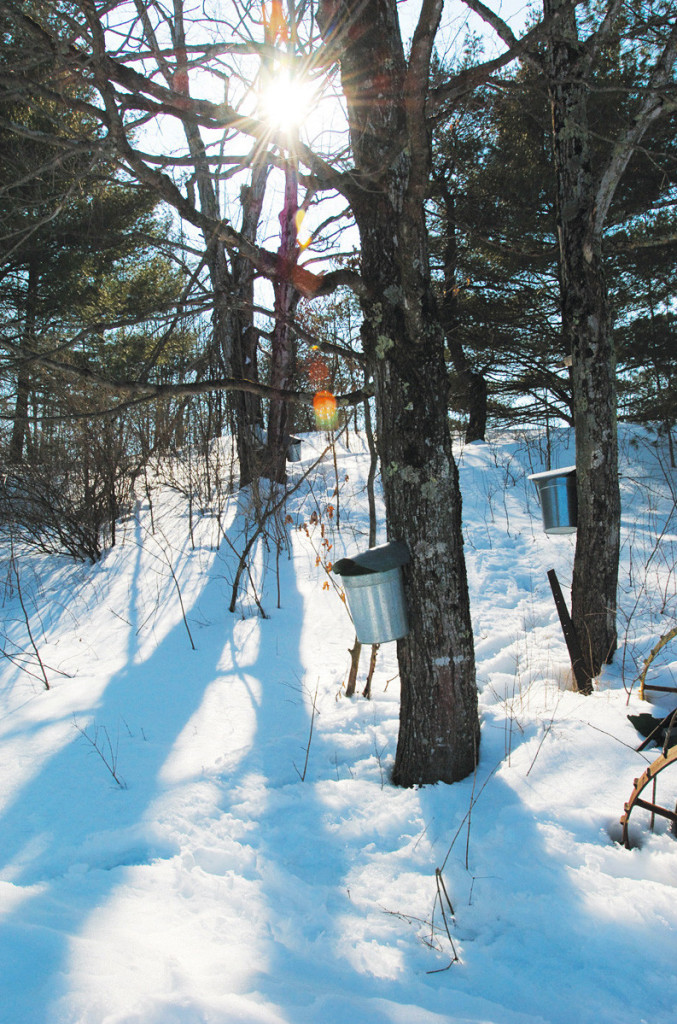
Post-European Settlement
When European settlers met up with Native Americans who were producing maple sugar, they introduced the metal kettle to the syrup or sugar making process. This drastically increased the efficiency of the process and allowed pioneers in the northeast to produce a years supply of sugar self sufficiently.
In the early years of the United States maple was promoted by very prominent men such as Benjamin Franklin and Thomas Jefferson. They liked the idea that maple made the United States less reliant on foreign sugar sources. Most of the foreign sugar was produced by slave labor in the West Indies. Thomas Jefferson is credited with promoting maple sugar as a “home grown” alternative to foreign produced sugar.
In the early 1800’s the creation of wooden spouts made for a much less intrusive way to gather the sap from the tree. During this period the price of pure maple sugar dropped below the price of imported sugar and the industry was starting to see much growth and innovation.
The mid to late 1800’s gave way to innovations such as the sugarhouse or sugar shack, the first maple evaporating pan, and the production of metal spouts. The sugarhouse or sugar shack was simply an outbuilding with the sole purpose of boiling down maple sap. The first maple evaporating pans were flat bottomed and highly efficient compared to the round kettles increasing the amount of boiling surface area. The metal spouts decreased damage done to the trees outer and inner bark. The spouts were also designed to hold up the sap collection buckets off the ground and later allowed them to have covers, keeping them clean and free of debris.
Soon after the flat pan was developed, pans with flues or large corrugations going up and down across the width of the pan, greatly increased the surface area of the pan that was exposed to heat. Thereby increasing evaporation rates. Right here in the State of Vermont in the 1870’s the first true Evaporator was invented; consisting of two pans on top of a metal firebox. Almost 150 years later, this evaporator set up is still the most commonly found in sugarhouses across the country.
In 1893 the Vermont Maple Sugar Makers Association (VMSMA) was founded. The association consisting of maple sugar makers and packers was created to promote Vermont maple syrup and protect the branding of 100% pure maple products. Our very own Pam Green is the Chair of the Board of Directors for VMSMA.
The 1900s
The 1900’s brought more growth to the maple sugaring industry as well as more innovation. The first attempts to use tubing to gather sap were actually with metal pipes. Due to freezing and leaking issues these never caught on as well as the plastic tubing used today. Another common misconception is that the use of plastic tubing for maple collection is new. The first patent for plastic maple pipelines was filed in the year 1959 by Nelson Griggs, a Vermonter. It didn’t take many years after using plastic pipeline before some farmers, who were in both the dairy and maple industry, started hooking their maple pipeline systems to their milk vacuum pumps. This would provide a constant negative pressure at the tap hole increasing the amount of sap gathered in a shorter amount of time. However, many of these innovations weren’t widely adapted or perfected until the late 1900’s.
The 2000s and Beyond
A sugar maple tree is usually 40 years old and at least 10 inches in diameter at chest height before the sugarmaker considers tapping it. We have a strict rule of only one tap per tree. When Spring temperatures reach 45º F during the day and nights remain below freezing (25º F is perfect), the sugarmaker drills a hole in the trunk of the tree and taps in a spout with either a hook and bucket or plastic tubing. Sugaring season has begun!
Sap averages 2% sugar concentration and looks like clear water. The sugar concentration of maple syrup is 66.9%. The sugarmaker will gather around 40 gallons of sap to make each gallon of syrup. Each tap will yield a little over one quart of syrup during the season on average. Most spouts used today are 5/16 Health Spouts. These are less invasive and healthier for the trees than the 7/16 diameter spouts used in the past.

The sap is gathered and brought to the sugarhouse where it is quickly boiled down. Most sugarhouses today are using reverse osmosis machines to cut down on fuel usage and labor while boiling down the sap. Once a portion of the water has been removed using reverse osmosis, the concentrated sap is pumped into a stainless steel tank above the evaporator. From here, the sap gravity feeds into the evaporator’s large back pan. This back pan has flues or large corrugations that maximize heat transfer, so most of the evaporation takes place here. The levels in the pans are controlled with floats allowing for a continuous process. The sap from the back pan will move into a small front or syrup pan. Front pans are flat and don’t boil as extreme as back pans giving the sugarmaker more control over the finished product. The front pan is divided into sections with small openings staggered throughout the sections. As the thinner sap from the back pan moves into the front pan it will push any sap that is thicker through the sections until it works it’s way over to the last section where the finished syrup is being made. When ready, the syrup is drawn off as close to 66.9% sugar concentration as possible. This is the concentration required to be considered syrup according to Vermont’s Maple Law. The fresh syrup is then taken to the canning kitchen were it is filtered, graded, checked for density, and packed into stainless steel barrels for storage in our walk-in cooler.
Up until recently wood has been the primary fuel used to boil down maple sap into maple syrup. However, many companies have left the tradition of burning wood behind in search of a less labor intensive way of boiling. Many larger operations are currently using oil, oil to produce steam, or other sources to create the heat required to turn sap into syrup. At Green’s Sugarhouse we are proud to be one of the few to carry on the tradition of burning wood.
The syrup season ends when warm Spring temperatures coax the leaf buds to unfold, leaving the sugarmaker to pull the taps, and clean the equipment.
Click this link to learn more about what we do with all our maple syrup at Green’s Sugarhouse.

